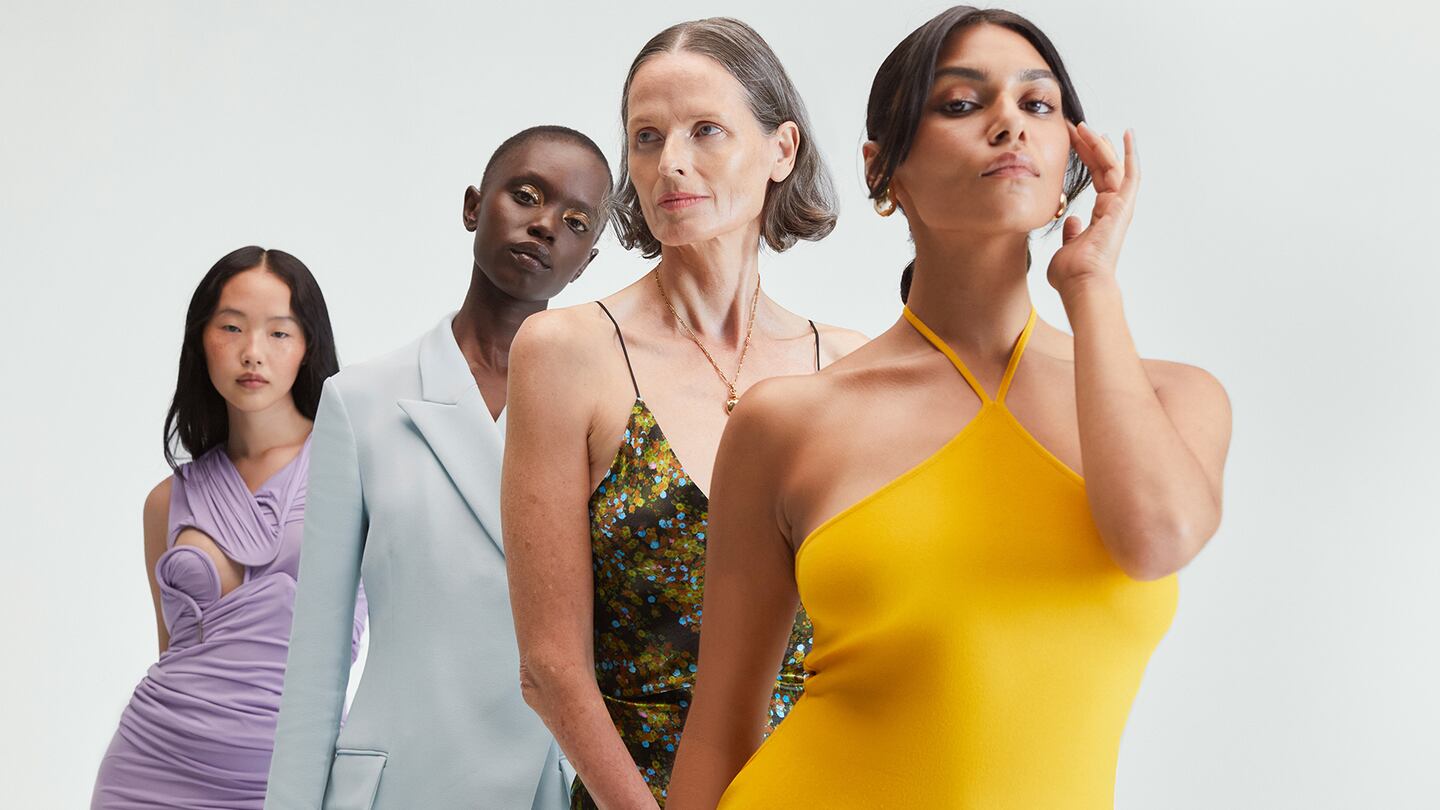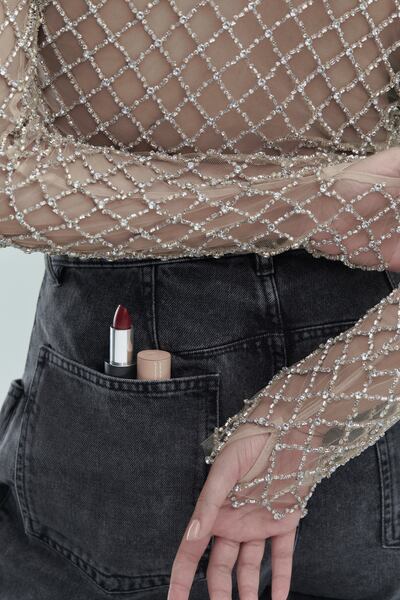
The Business of Fashion
Agenda-setting intelligence, analysis and advice for the global fashion community.

Agenda-setting intelligence, analysis and advice for the global fashion community.

High-end e-tailers are moving beyond handbags and six-inch platforms – to $325 serums and peptide-packed proprietary blends.
On Jan. 10, Moda Operandi added beauty to its assortment of designer fashion, accessories, fine jewellery and homewares. The e-tailer debuted about 300 products from 55 skin care, makeup, fragrance, hair and body care brands and a handful of beauty experiences including a facial analysis from plastic surgeon Dr. Lara Devgan for $12,000. (If the “Find Your Golden Ratio” assessment is too extravagant, Dr. Lara Devgan Vitamin C + E Ergothioneine Antioxidant Serum, which Moda is the exclusive retailer of, costs $145.)
Moda is the third luxury fashion site to enter the beauty category in under a year, following Farfetch and Shopbop, which launched beauty destinations in April and October 2022, respectively – and the latest to test the limit of its authority, which until now has been confined mostly to runway collections.
Co-founded in 2011 by Lauren Santo Domingo, Moda was conceived as a virtual trunk show destination where customers could pre-order looks from the runway, over the years expanding its business model to include current season collections, bridal, home and more. In May 2022, the site revealed plans to launch beauty and named Jessica Matlin, a veteran beauty editor and co-host of leading beauty podcast Fat Mascara, as its new beauty director.
ADVERTISEMENT
Matlin said the retailer’s fashion ethos extends to beauty. “Moda doesn’t try to be all things to all people...They don’t buy into every trend,” she said. “They take a really cool mix of established designers – you have Tom Ford, The Row and Chloé – but they’ll also buy brands that are going to be the next big thing.”
This is the approach Matlin took with skin care, Moda’s largest beauty category. The site sells a mix of the expected premium players – La Mer, Dr. Barbara Sturm, Augustinus Bader and Sisley Paris – with smaller, lesser known (but just as premium) lines Eighth Day and celebrity aesthetician Joanna Czech’s Joanna Czech Skincare. Serums from Czech and Eighth Day cost over $300 each.

There’s brand overlap among the sites, like most beauty retailers. Farfetch and Amazon-owned Shopbop carry many of the same lines, including Augustinus Bader, Vintner’s Daughter and Dr. Barbara Sturm. Shopbop doesn’t sell Westman Atelier and La Mer (or any brands from The Estée Lauder Cos.), but it does have Dr. Lara Devgan, 111Skin and Costa Brazil.
Matlin described Moda’s selection as “heroes and hidden gems,” an approach that differs from beauty giants and department stores that typically buy a brand’s entire label, or at least most of it. Dr Barbara Sturm, Retrouve and Leonor Greyl are among the brands with a “tight edit” and Moda is the first US e-commerce site to sell Révérence de Bastien, a nail and foot care brand, and the first retailer to carry Violette_FR’s colour cosmetics (outside of the makeup line’s own site).
Beauty may never become the primary business driver for Moda, Farfetch or Shopbop, but there’s plenty of reasons to get into the category. Retailers get to play in a category that’s among the most resilient in times of economic uncertainty and has a very low return rate.
“The luxury sector is less sensitive to the downturns, but beauty is holding strong,” said Manola Soler, senior director at Alvarez & Marsal Consumer Retail Group. “It was one of a few categories over Black Friday that grew in terms of units. A lot of categories grew in terms of dollars, but that was inflation driven.”
Meanwhile, pricey beauty labels with high margins gain access to an audience in an environment where they’re already spending.
“They [Moda] can have a strong, vibrant business with better margins. It’s less volatile than fashion, fashion is maybe more discretionary a purchase. This is really a stabiliser to their business,” said Marie Driscoll, managing director of luxury and fashion at consultancy Coresight Research.
ADVERTISEMENT
Moda doesn’t carry Tom Ford Beauty yet, but it sells emerging makeup brands from top makeup artists Violette Surrat (Violette_FR) and Isamaya Ffrench (Isamaya) that don’t yet have distribution at Sephora or Ulta Beauty. Excluding industry types or those extremely in the know, most shoppers will discover these brands for the first time at Moda or Farfetch. This was a role once played by specialty retailers like Barneys New York and department stores, which despite valiant efforts to revamp their beauty floors over the last decade, continue to see their businesses falter.
“Where you got luxury beauty is broken. You get it at Sephora, you get it at Ulta – and they have brought so many brands to many individuals – but they don’t have an exclusive, incredible feel,” Driscoll said.
This is where Farfetch, which deployed a three-pronged strategy vis-à-vis a marketplace offline retail with Browns and an incubator to build its own brands, and now, Moda has an opportunity. Farfetch owns Violet Grey, the luxury beauty retailer known for turning new brands into household names, like Augustinus Bader. Farfetch acquired Violet Grey in January 2022 in advance of its beauty rollout.
Moda’s Santo Domingo is a runway fixture, known for promoting global powerhouses from Prada to newer labels like Des_Phemmes and Diotima, which the retailer worked to create exclusive designs with.
Despite her gravitas, it may be hard to sell beauty if a customer base doesn’t know you’re selling it. Farfetch hasn’t publicised its beauty section as much in the recent months, nor has Shopbop. Without daily, or even weekly, promotion, it’s hard for shoppers to know these sites even sell beauty. How Moda will communicate its presence in beauty, and continue to do so, remains to be seen.
Sometimes it just comes down to FOMO. As a retailer – from big box to luxury fashion pure plays – you don’t want to be the only one that doesn’t sell beauty. But unless the category is a main focus of an operation, taking market share from incumbents is unlikely.
And that’s okay, some experts say. Luxury fashion customers are already buying beauty, and retailers have to sell anything their customer may be interested in buying (pending it makes sense with core offerings). In these instances, beauty can be an effective add-on, a serum or sunscreen that you can throw in your cart while perusing designer handbags, or an entry into luxury shopping altogether (a jar of La Mer still costs about a tenth of many of Farfetch or Moda’s designer handbags).
Soler compared beauty to Moda’s introduction of home, which offers a number of exclusive home décor and tabletop collaborations.
ADVERTISEMENT
“They’re not going to necessarily become a luxury home site. I see it as completing that constellation of lifestyle and testing the stretch of the limits of the authority across different categories,” Soler said. “I don’t see it shifting the centre of gravity but expanding that bubble of influence.”
This month, BoF Careers provides essential sector insights to help beauty professionals decode the industry’s creative landscape.
The skincare-to-smoothie pipeline arrives.
Puig and Space NK are cashing in on their ability to tap the growth of hot new products, while L’Occitane, Olaplex and The Estée Lauder Companies are discovering how quickly the shine can come off even the biggest brands.
Demand for the drugs has proven insatiable. Shortages have left patients already on the medications searching for their next dose and stymied new starters.